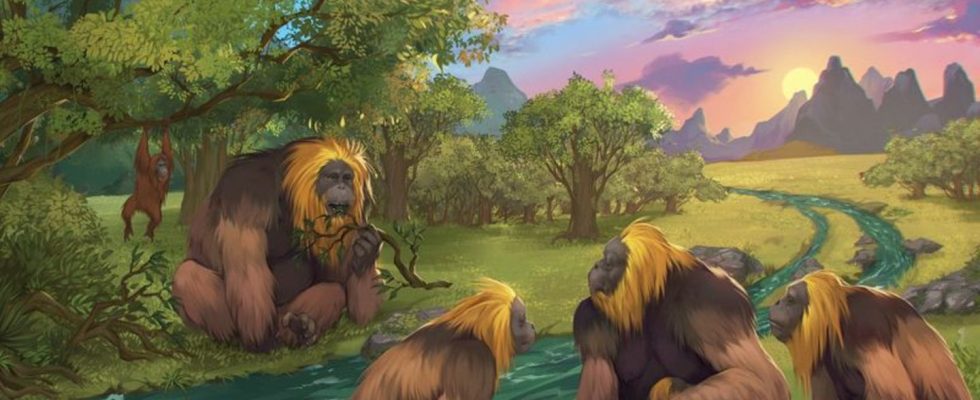Science
When and how the largest great ape disappeared
Artist’s impression of a group of Gigantopithecus blacki in a forest. photo
© Garcia/Joannes-Boyau/Southern Cross University/dpa
Apparently its enormous size was also its downfall: a study explains when the largest ape of all time went extinct – and how it happened.
Huge but inflexible: With an estimated height of three meters and weight of up to 300 kilograms, Gigantopithecus blacki was the largest great ape to ever walk the earth. Based on a comprehensive analysis of previous finds, an international research team has now determined when the colossal primate… South Asia died out – and why.
The story of the giant ape’s discovery alone sounds adventurous: the German paleontologist Gustav Heinrich Ralph von Koenigswald came across his trail in Hong Kong in 1935 in a pharmacy that was selling a strikingly large molar as a dragon’s tooth. Despite decades of extensive searching, only four jawbones and almost 2,000 individual teeth provide evidence of the former existence of this species, as the group led by Kira Westaway from Macquarie University in Sydney writes in the journal “Nature”.
G. blacki was the ultimate specialist
Researchers have concluded a number of things from this: in addition to size and weight, for example, that the great ape lived in forests, especially in the south of what is now China, at least 2.2 million years ago, ate a purely plant-based diet and disappeared 330,000 years ago. However, such dating has so far been controversial.
For greater clarity, the team first dated finds from 22 caves using six different methods: According to this, G. blacki lived 2.3 million years ago, but only disappeared around 255,000 years ago. Pollen analyzes indicate that the environment of the great apes changed significantly within two million years: While the species flourished and even increased in size until around 700,000 years ago, a decline probably set in after that. Over time, the initial jungle with dense treetops gave way to a grassland with fewer trees but rich in ferns. In addition, more distinct seasons apparently developed. Remains of coal show that it burned more frequently and that it also became drier.
This change had a negative impact on the giant apes’ diet, which was primarily based on a lot of fruit, and their access to water. Tooth enamel analyzes indicate that G. blacki was unable to adapt to the changes in the long term – in contrast to its cousin, the Chinese orangutan (Pongo weidenreichi), which only died out much later. “G. blacki was the ultimate specialist compared to agile adaptors like orangutans, and this ultimately led to its demise,” said co-author Yingqi Zhang of the Chinese Academy of Sciences.
According to the research team, the fact that the habitat as well as the population shrank significantly is demonstrated by the decreasing number of sites and fossils in the late phase. The group suspects that the giant ape’s presumably long reproduction time and its enormous size, which hindered mobility, may also have contributed to its demise.
However, there is no evidence that the human species living in East Asia at the time – such as Denisovans – were involved, even if such groups apparently spread in South Asia at that time. In any case, the ultimately most successful Homo species had not yet left Africa: Homo sapiens had only just emerged 255,000 years ago.

